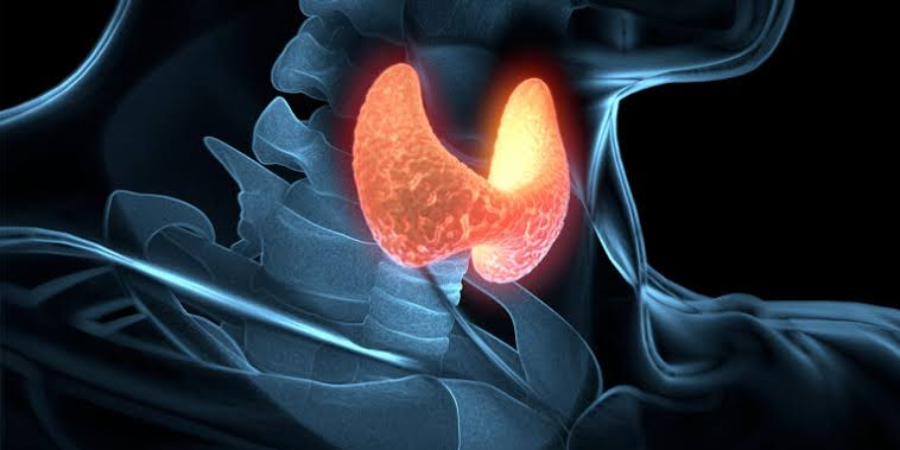

Thyroid gland produces to principle hormones thyroxine and triiodothyronine with regulate the metabolic rate of the body.
Thyroid disorders are common, affecting more than 10% of people in the US, and laboratory tests are integral in the management of these conditions.
Thyroid hormones
Thyroid gland is located either side of the trachea below the larynx. It produce to principal hormones thyroxine and 3,5,3-triiodothyronine which regulate the metabolic rate of the body.
Biosynthesis of thyroid hormones
Iodine is essential for the synthesis of thyroid hormones. More than half of the bodies total Iodine content is found in the thyroid gland. Thyrocin is first iodineated at position 3 to form monoiodotyrosine and then at position 5 to form diiodotyrosine. To molecules of DIT couple to form thyroxine. One molecule of MIT when coupled with one molecule of DIT triiodothyronine is produced.
Biochemical functions of thyroid hormones
Triiodothyronine is about four times more active in its biological functions then thyroxine. The biochemical functions attributed to thyroid hormones.
1)Influence on the metabolic rate
Na+ K+ ATP pump this and energy dependent process which consumes a major share of cellular ATP. Na+ K+ ATP are activity is directly correlated to thyroid hormones and this in turn with ATP utilitzation.
2)Effect on protein synthesis
Thyroid hormones act like steroid hormones in promotion Protein synthesis by action at the transcriptional level.
3)Influence on carbohydrate metabolism
Thyroid hormones promote internal observation of glucose and its utilization. This hormones increase gluconeogensis and glycogenolysis with an overall effect of enhancing blood glucose level.
4)Effect on lipid metabolism
Lipid turnover and utilization are stimulated by thyroid hormones. Hypothyroidism is associated with elevated plasma cholesterol levels which can be reversed by thyroid hormone administration.
Abnormalities of thyroid function
Among the endocrine glands thyroid is the most susceptible for hypo or hyperfunction.
Laboratory diagnosis of thyroid function
Measurement of Basil metabolic rate was once used to reflect thyroid activity. The estimation of serum protein bound iodine, representing the circulation thyroid hormones, was employed for along time to access thyroid function. The normal serum PBI concentration is 3-8 ug 100 ml. Hypothyroidism is associated with degreesd PBI and hyperthyroidism with increased PBI. In recent years more sensitive and reliable test have been developed to asess thyroid activity
Thyroid function test, Thyroid-stimulating hormone, Free thyroxine, Free triiodothyronine, Thyroglobulin, Thyroglobulin antibodies, Thyroid peroxidase antibodies, Thyroid-stimulating hormone receptor antibodies, Calcitonin.
Radioactive iodine uptake and scanning of thyroid gland are also used for diagnosis.
Thanks for Reading🙏
